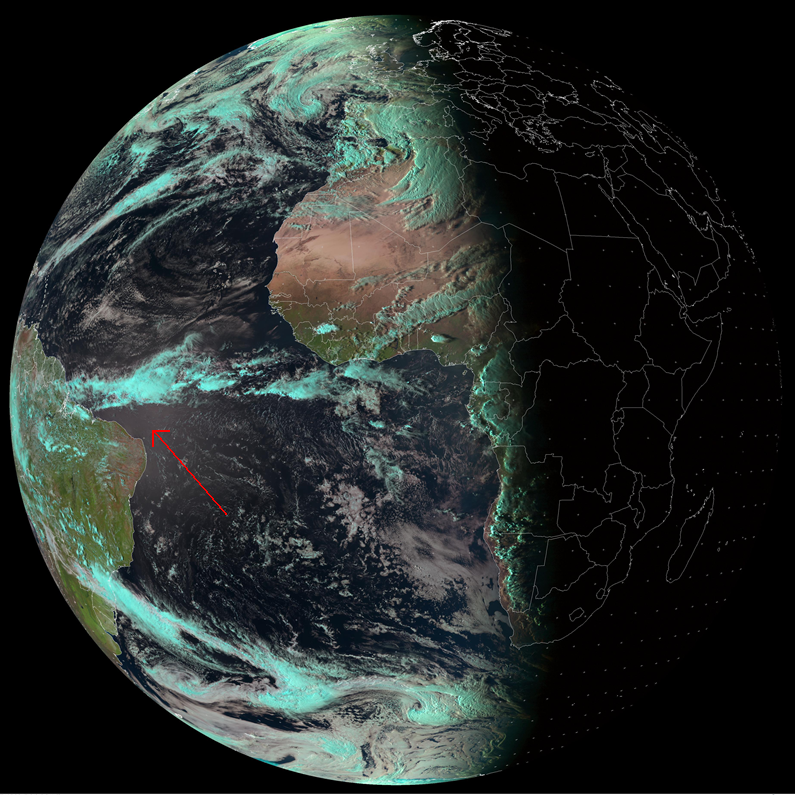Oceans and lakes
Oceans and lakes appear black in the Natural Colour RGB images.
Liquid water strongly absorbs short wave radiation emitted from the sun. The SEVIRI instrument onboard MSG measures only small amounts of back scattered radiation from the sun in the spectral range between 0.6 and 1.6 microns. Therefore the Natural Colour RGB depicts ocean and lake surfaces in dark (black) colours.
More solar energy is reflected from the water surface when the sun reflection angle is the same than the satellite sensor is viewing the surface. In the area of the sunglint (red arrow) the ocean surface becomes greyish (see image below).

Sun glint visible near the Brasilian coast in the Natural Colour RGB (indicated by the red arrow).
Explanation of the colours of water surfaces in the Natural Colour RGB (see the recipe):
Liquid water absorbs most of the solar energy in the spectral range between 0.6 and 1.6 micrometer. As the sensor does not receive noticable radiation in all three spectral channels, the resulting colour is black. In the special case of "sun glints", the SEVIRI sensor receives a higher fraction of reflected solar radiation (equal amount in all three channels) and the resulting colour is grey.

